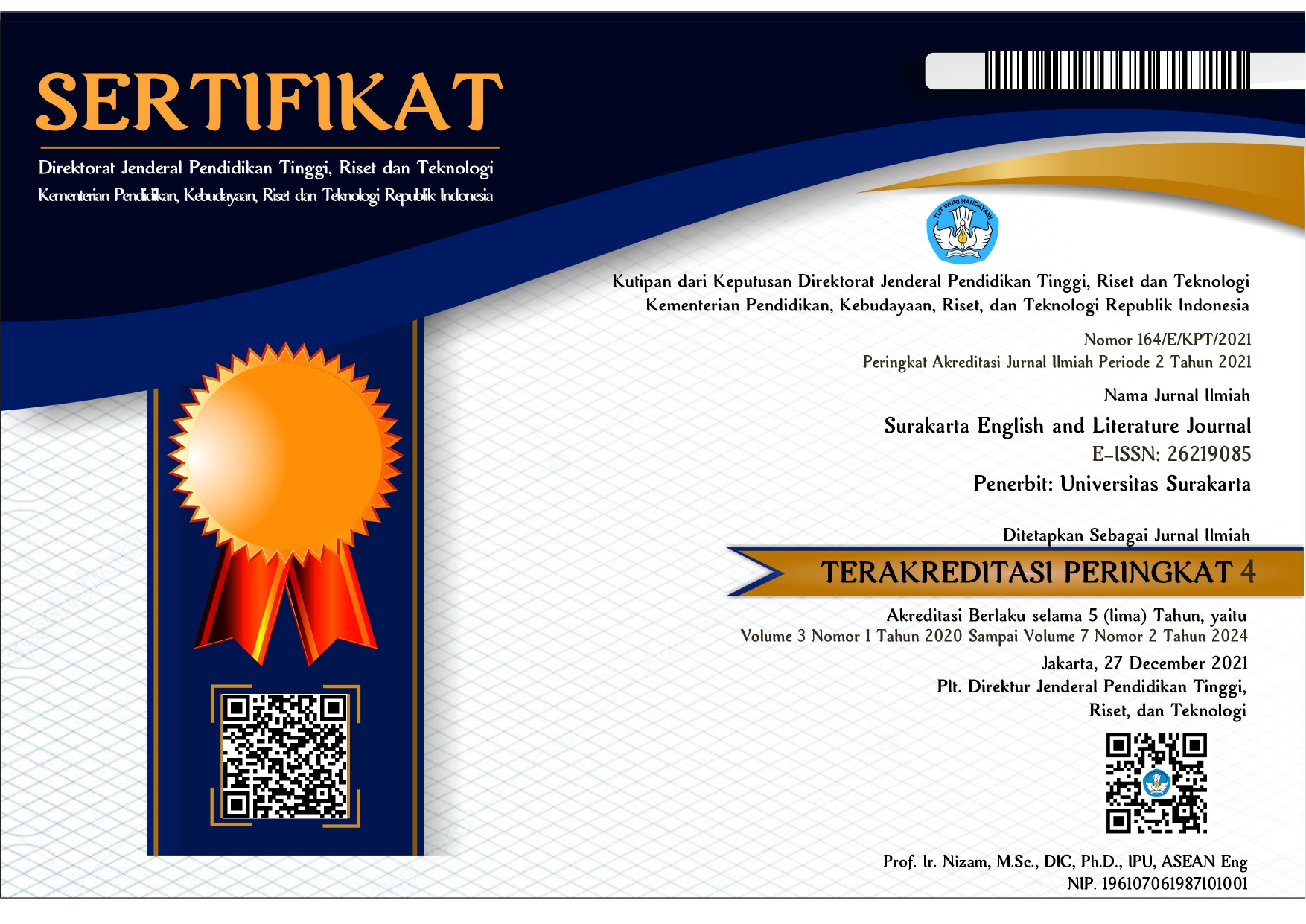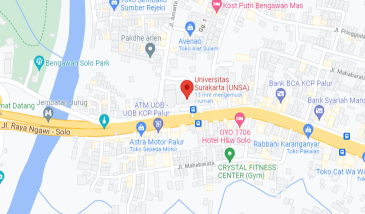Application of Microsoft Office 365 as English Vocabulary Learning Media for Vocational High School Students
Keywords:
English Vocabulary, English Learning Media, Vocational SchoolAbstract
English language learner often deals with the problem of vocabulary learning. Students as second language learner need teacher’s guide to find adequate English vocabulary learning media. This study aimed to analyze the implementation of Microsoft Office 365 for teaching and learning English vocabulary of vocational high school students in SMK Analis Kesehatan Nasional. This study involved 20 students in eleventh grade students with the experience of using Microsoft Office 365 application for two years. By applying descriptive qualitative research, this study used questionnaire to collect the data and explain the result by description. This study presented conclusion that Microsoft Office 365 application is useful for teaching and learning English vocabulary of students in SMK Analis Kesehatan Nasional. This conclusion is based on the questionnaires’ results dealing with students’ English vocabulary comprehension in Microsoft Office 365, influence of Microsoft Office 365 toward students’ English vocabulary, and students’ English vocabulary knowledge in Microsoft Office 365. Dealing the result of questioners, 77,5% students comprehended English vocabulary in Microsoft Office 365 and
97,5% students admitted Microsoft Office 365 influenced students’ English vocabulary. In average of students’ vocabulary knowledge, 71.25% students comprehended 20 English vocabularies on homepage of Microsoft Office 365.
References
Afzal, N. (2019). A Study on Vocabulary Learning Problems Encountered by BA English Majors at
the University Level of Education. Arab World English Journal, 10(3), 81–98. https://doi.org/https://dx.doi.org/10.24093/awej/vol10no3.6
Arianti, A. (2021). A Study of Students’ Efforts To Improve The Ability in English. Surakarta
English And Literature Journal, 4(1), 1–10. https://doi.org/http://dx.doi.org/10.52429/selju.v4i1
Beeram, R. (2018). Top 10 Features and Benefits of Office 365. SNP India Center. https://www.snp.com/blog/top-10-features-and-benefits-office-365
Hammersley, M. (2013). Defining Qualitative Research. What is Qualitative Research? Bloomsbury Academic. https://doi.org/http://dx.doi.org/10.5040/9781849666084.ch-001>
Harmer, J. (2007). The Practice of English Language Teaching (4th ed.). Pearson Longman.
Lavrakas, P. J. (2008). Encyclopedia of Survey Research Methods (1st ed.). Sage Publications
Long, R. (2007). Richard Long : selected statements & interviews (B. Tufnell (ed.)). Haunch of Venison.
Mahbub, M. A. (2018). English Teaching in Vocational High School: A Need Analysis. Journal of English Education and Linguistics Studies, 5(2), 249–250. https://doi.org/10.30762/jeels.v5i2.835
Miles, M. B., & Huberman, A. M. (1994). An Expanded Sourcebook: Qualitative Data Analysis (2nd ed.). Sage Publications.
Montgomery, J. (2007). The Bridge of Vocabulary: Evidence-based Activities for Academic Success (1st ed.). NCS Pearson Inc.
Nation, I. S. . (2001). Learning Vocabulary in Another Language. Cambridge University Press.
Nuralisah, A. S., & Kareviati, E. (2020). The Effectiveness of Using Memrise Application in Teaching Vocabulary. Professional Journal of English Education, 3(4), 494–500. https://doi.org/10.22460/project.v3i4.p494-500
Nurnaningsih. (2021). The Use of Flashcard in Teaching English Vocabularies by Young Mothers. Surakarta English And Literature Journal, 4(2), 44–53. https://doi.org/http://dx.doi.org/10.52429/selju.v4i1
Pun, M. (2013). The Use of Multimedia Technology in English Language Teaching: A Global Perspective. Crossing the Border: International Journal of Interdisciplinary Studies, 1(1), 29–38. https://doi.org/10.3126/ctbijis.v1i1.10466
Rohmatillah. (2014). A Study on Students’ Difficulties in Learning Vocabulary. English Education, 6(1), 69–85. https://doi.org/https://doi.org/10.24042/ee-jtbi.v6i1.520
Santoso, D. A. A. (2014). The Effects of Reading Habit and Vocabulary Mastery Towards Student’s Speaking Skill. Deiksis, 6(3). https://doi.org/http://dx.doi.org/10.30998/deiksis.v6i03.527
Shoebottom, P. (n.d.). Types of Vocabulary. Retrieved December 15, 2021, from http://esl.fis.edu/learners/advice/vocab_types.htm#kopf
Wafi, N. M. S. (2013). The Effectiveness of Using Animated Pictures Program in Learning English Vocabulary among the Fifth Graders in Gaza. Thesis.
Wijaya, D. P. (2015). Implementasi E-Learning di SMP Negeri 10 Yogyakarta [Universitas Negeri Yogyakarta]. In Universitas Negeri Yogyakarta. http://eprints.uny.ac.id/id/eprint/20231
Zhang, B. (2011). A Study of the Vocabulary Learning Strategies Used by Chinese Students.
Digitala Vetenskapliga Arkivet, 44. http://hkr.divaportal.org/smash/record.jsf pid=diva2%3A438944&dswid=8056
Downloads
Published
How to Cite
Issue
Section
License
Copyright (c) 2022 Saly Kurnia Octaviani, Arumsari

This work is licensed under a Creative Commons Attribution-ShareAlike 4.0 International License.
Licensing for Data Publication
-
Open Data Commons Attribution License, http://www.opendatacommons.org/licenses/by/1.0/ (default)
-
Creative Commons CC-Zero Waiver, http://creativecommons.org/publicdomain/zero/1.0/
-
Open Data Commons Public Domain Dedication and Licence, http://www.opendatacommons.org/licenses/pddl/1-0/














